The 2017 RAMP Expedition to Papahānaumokuākea Embarks
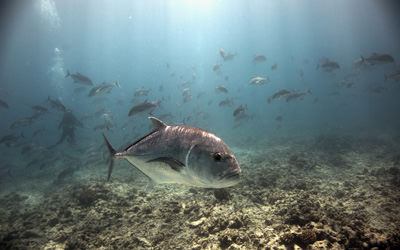
The 2017 Reef Assessment and Monitoring Program (RAMP) expedition to the Northwestern Hawaiian Islands is underway from September 6-30, 2017 aboard NOAA Ship Hiʻialakai. Researchers will visit Ni‘ihau, French Frigate Shoals, Laysan Island, Lisianski Island, Pearl and Hermes Atoll, Midway Atoll and Kure Atoll within Papahānaumokuākea Marine National Monument to conduct various research activities.
Monitoring reef fish, algae, corals and other invertebrates
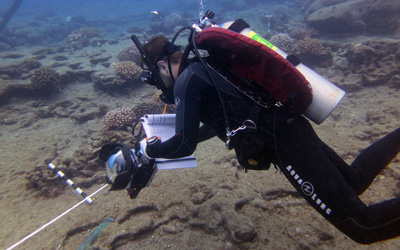
Divers will conduct rapid ecological assessments (REAs) of reef fish, corals and non-coral invertebrates to improve our understanding of the health of coral reef ecosystems throughout the archipelago. Three distinguished students from the University of Hawaiʻi are participating in the reef monitoring operations this year. They were selected as interns through a partnership with UH’s Marine Option Program and the University of Hawai‘I at Hilo and received additional training from NOAA Pacific Islands Fisheries Science Center’s Coral Reef Ecosystem Program. Rapid ecological assessments have been conducted in the NWHI since 2000. Long-term monitoring provides information on the status and trends of reef conditions that helps managers make decisions about Monument management. In addition, scientists will collect dry driftwood pieces on the beach at Midway Atoll for a first-ever characterization of boring shipworm mollusks.
Coral Health
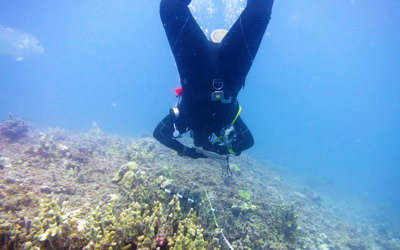
Large marine protected areas such as PMNM provide a unique opportunity to study the effects of climate change on coral diseases and overall reef health in the absence of local human-induced stressors. Divers will conduct surveys to determine how extensively diseases are affecting the Northwestern Hawaiian Islands to help managers identify and target coral disease hot spots, determine whether coral health is changing over time, and explore the extent to which disease is influencing coral communities and overall reef health in the Monument.
Baited Remote Underwater Video Stations (BRUVS)
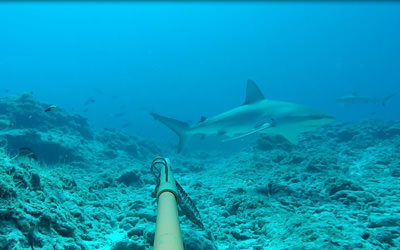
Scientists will conduct surveys at French Frigate Shoals and Midway Atoll using Baited Remote Underwater Video Stations (BRUVS), which are baited single-video camera systems, to film and measure sharks, rays and other marine life on coral reefs in the Monument. This research is part of a larger multi-institutional project; data from the NWHI will be integrated into regional and global analyses of reef shark and ray populations that improve understanding of the status of shark populations in the NWHI in comparison with those in other locations, as well as how effective protected areas are for reef sharks and rays. This is a part of a world-wide assessment of predator abundances on reefs around the world.
Humpback Whale Recording
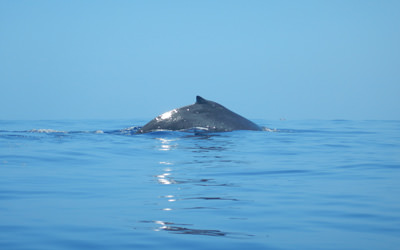
Scientists will deploy two deep-water Ecological Acoustic Recorders (EARs) to 100-500 m depths to record humpback whale songs. The purpose of this research is to determine wintering activities of humpbacks in the NWHI, to characterize the structure and geographic variation of humpback whale songs, and to determine the similarity/dissimilarity between songs recorded in the NWHI and other major breeding grounds.
Open Circuit SCUBA-Closed Circuit Rebreather Comparison
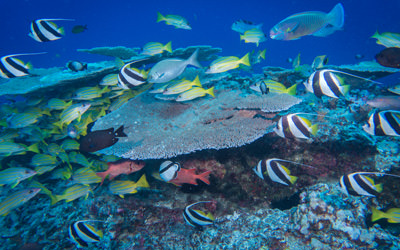
Scientists will conduct fish surveys using two different types of diving apparatus, open-circuit SCUBA (OC) and closed-circuit rebreather (CCR) to examine the effects of divers' bubbles produced by OC on fish behavior and, in turn, the outcomes of fish surveys. This research extends a previous study of OC-CCR comparison done in the Main Hawaiian Islands (MHI) and provides important information about fish behavior in the protected NWHI compared to the populated MHI.
Apex Predator Studies
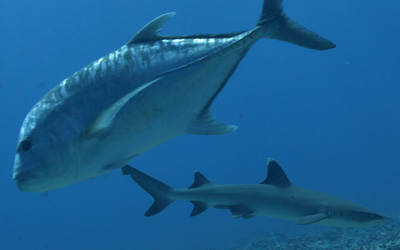
A research team will service existing underwater acoustic receivers at French Frigate Shoals, Pearl and Hermes Atoll and Midway Atoll in order to recover data and prepare the receivers for another 12 months of operation. The data is used to quantify the movements of top predators (sharks and large fishes) to improve our broad understanding of the ecology of the NWHI and clarify movements of large predators between the NWHI and the Main Hawaiian Islands.
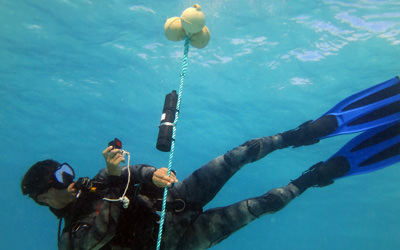
The scientific team of this year's RAMP expedition includes researchers from NOAA’s Office of National Marine Sanctuaries’ Papahānaumokuākea Marine National Monument, NOAA’s Pacific Islands Fisheries Science Center, Joint Institute for Marine and Atmospheric Research, University of Hawai’i-Hilo, and the Australian Institute of Marine Science (AIMS).
Visit the PMNM Facebook page for daily updates: https://www.facebook.com/Papahanaumokuakea/



